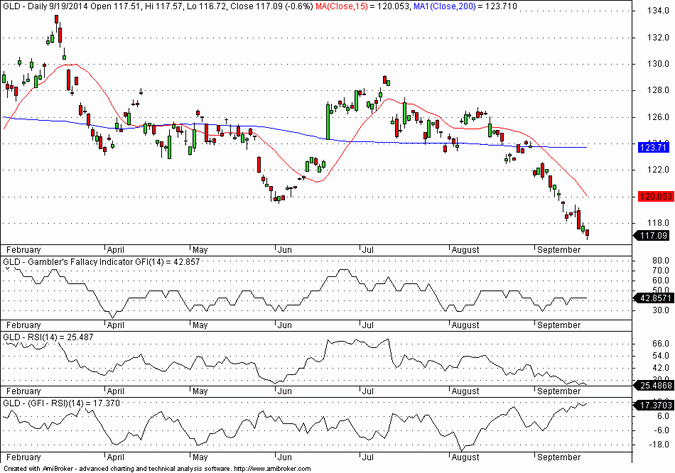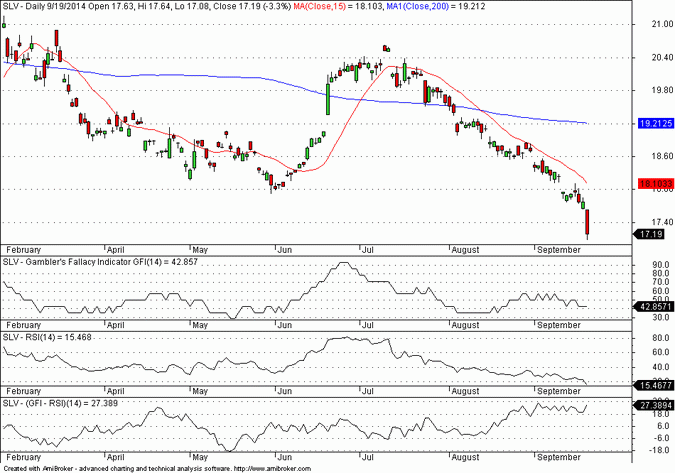Lately some markets have remained highly oversold and others highly overbought for extended periods of time, as also measured by the Relative Strength Index, or RSI. Maybe in this new market environment, technical traders should consider using the Gambler’s Fallacy Indicator™, or the GFI, in addition to the RSI.
I will show two recent examples involving GLD and SLV in order to illustrate how the RSI(14) has prematurely indicated oversold conditions while the GFI(14) has not. This is important because the RSI is used as part of many short-term trading strategies.
The GFI and the formula for its calculation were introduced in this post.
GLD
The first pane of the above chart shows of plot of GFI(14), which since September 11 has stayed near 42. However, in the same period the RSI(14) steadily decreased to an oversold level of 25.49, as shown on the second pane. The third pane shows the spread between the GFI(14) and the RSI(14) which has increased to 17.37.
Basically, while the RSI was showing that oversold conditions were becoming more significant, the GFI was indicating nothing to this effect. One explanation is that in reality the RSI is more of a short-term momentum indicator rather than an oversold/overbought condition indicator. On the other hand, the GFI reflects the gambler’s fallacy, i.e. the – often false but occasionally correct – belief that if a market is overextended in either direction, then it will correct. At this point, while the RSI is indicating an oversold market in GLD, the GFI is not.
SLV
Price action in SLV demonstrates even better the points of this article. The GFI(14) has remained above 40 since the beginning of this month with a current reading at 42.85, while the RSI(14) has plunged to 15.46. Again, this is due to the exponential average used in RSI that forces it to act as a short-term momentum indicator while the GFI acts better as an overbought/oversold indicator in the medium-term.
Scrap the RSI?
I think the RSI is useful when one understands when it acts like a momentum indicator and when is should be used as an overbought/oversold condition oscillator. Market dynamics have changed lately and markets stay overbought or oversold for longer than before. Technical traders should be very careful when they use the RSI as an indicator of reversals because it usually points to continuation of the action instead.
Rush to use the GFI instead?
I think the GFI is a better overbought/oversold indicator but technical traders should not think it will solve their problems because all indicators are derivatives of price and they do not offer sufficient conditions for price action. Choosing the proper indicator depends on trading objectives. There is no such thing as an indicator that is the solution to all problems. There are no easy solutions in trading either.
You can subscribe here to notifications of new posts by email.
Disclosure: no relevant positions.
Charting program: Amibroker
Disclaimer








